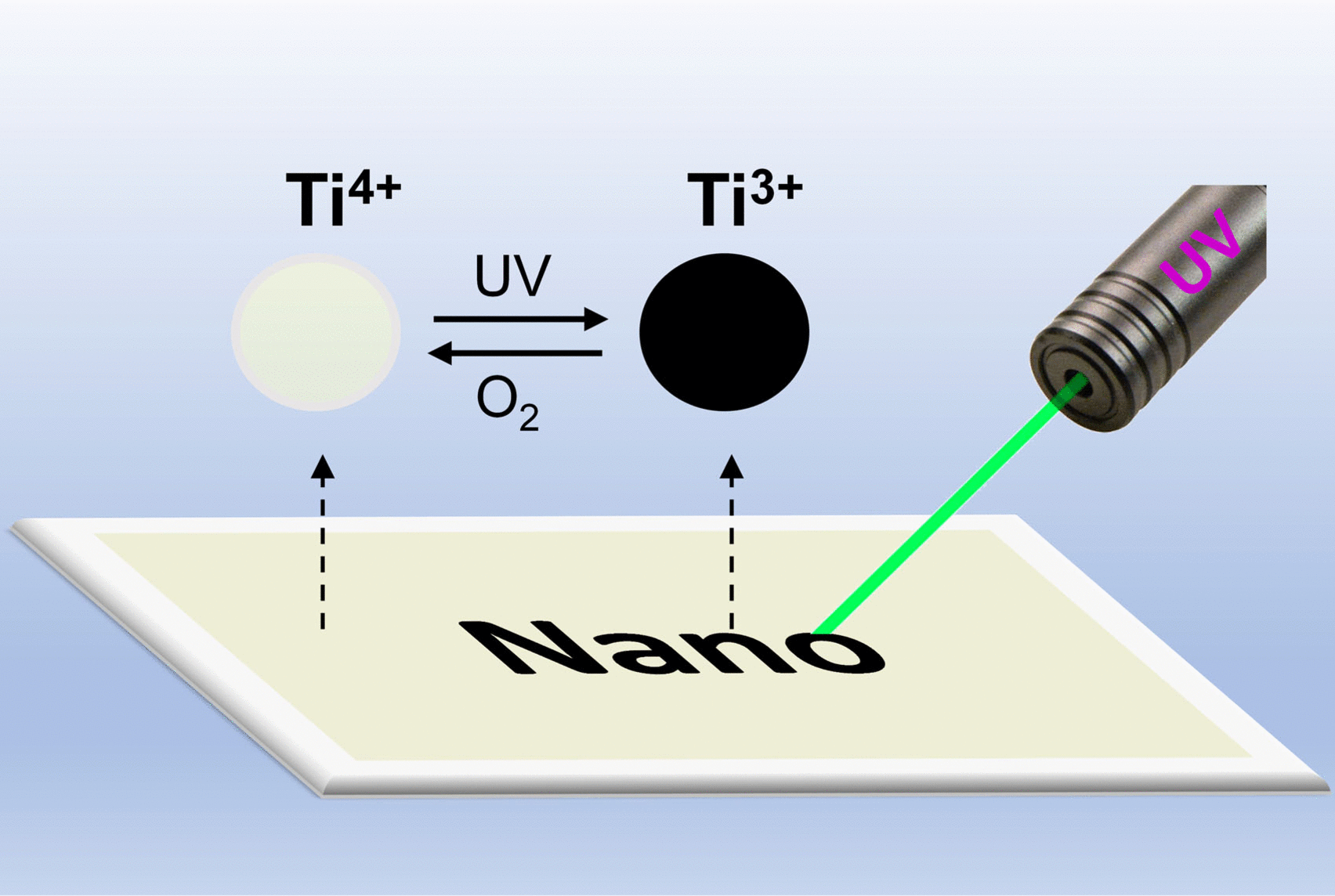Researchers have succeeded in developing a coating material that can be written on with UV light and then removed with oxygen. Modifications on rewritable paper might help cut down on paper waste in a number of settings.

Image Credit: Wiley-VCH and Angewandte Chemie.
According to the journal Angewandte Chemie, the substance is made up of three non-toxic components and is synthesized in a single step.
To create a light-sensitive, rewritable system, Yadong Yin and his colleagues at the University of California, Riverside (USA) concentrated on Titania (TiO2) nanocrystals.
When treated with ultraviolet (UV) radiation, nanocrystalline TiO2, a semiconductor, blackens owing to charge separation and titanium atom reduction. The color shift is not permanent, however, since oxygen in the air re-oxidizes the titanium, restoring clarity.
The study team focused on making the color shift last for a longer period of time. They adorned the crystals with a common non-toxic chemical called diethylene glycol and employed nitrogen as a dopant, which they derived from urea.
The material, which was introduced to the synthesis as a solvent, was also important in the color shift because it scavenged extra electron holes, delaying reoxidation and the return to the transparent state, according to the researchers.
The nanocrystals established a uniform coating that could be written on with UV light when applied to glass or paper. All that was required was 30 seconds of irradiation with a light source at a wavelength of less than 400 nm to generate the writing.
The scientists stressed that a powerful light source was not required; lamps in the LED power range were adequate to provide a high level of contrast on the material.
The team experimented with two different light-writing techniques. They started by lighting the paper or glass substrate with a photomask to create patterns or printed text. They also used a laser pen to create freehand writing.
Both techniques produced a high-contrast design that remained stable for several hours and could be either wiped or slowly faded due to oxidation. The researchers say that coating the film surface with a protective layer of a non-toxic polymer and decreasing its exposure to oxygen can increase the life of the printing.
The major advantage of Yin’s and his team’s technology is its reusability. The research found that up to 50 write and erase cycles can be accomplished without noticeable contrast loss.
This implies the technology could be used in a variety of sectors that need reusable/rewritable surfaces, such as daily transportation tickets, information boards, data storage, and sensor technologies.
The authors emphasize the ease of manufacture, which uses ordinary, non-toxic starting components, as well as the material’s great compatibility with other materials.
Journal Reference:
Dr. Aleisa. R, et al. (2022) Rapid High-Contrast Photoreversible Coloration of Surface-Functionalized N-Doped TiO2 Nanocrystals for Rewritable Light-Printing. Angewandte Chemie doi:10.1002/anie.202203700.